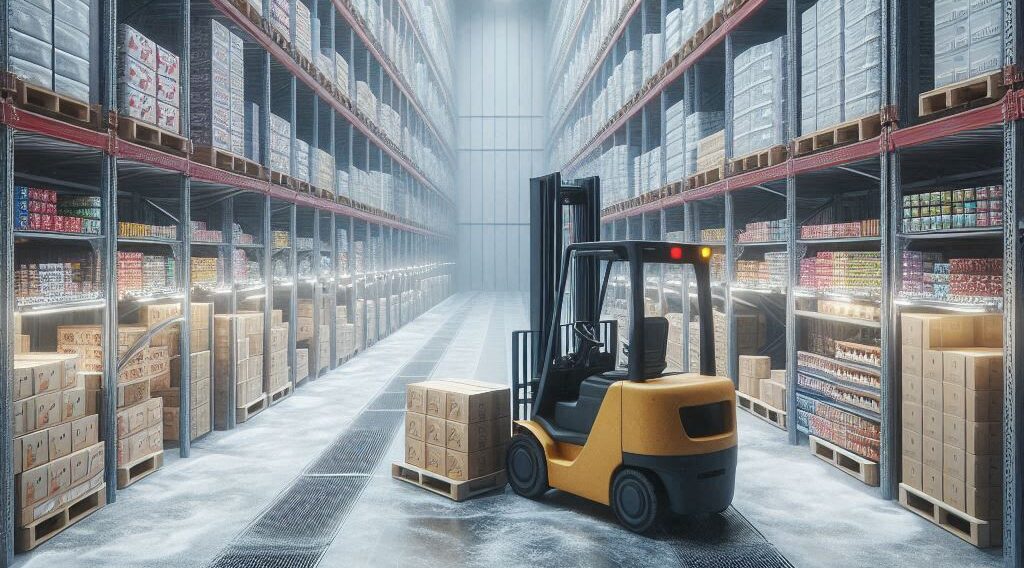

At the Multimodal 2024 conference, Dirk Hoffmann from DP World highlighted an innovative approach to reducing carbon emissions within the logistics and supply chain sector: freezing goods at -15 degrees Celsius instead of the industry standard of -18 degrees Celsius. This seemingly minor adjustment could yield significant environmental benefits, akin to removing millions of cars from the road. Echoing this sentiment, David Brown, Director at MAERSK, stated, “We need to get to net zero, and this is an easy way to help get us there.”
The Environmental Impact of Freezing Goods at -15 Degrees
Energy Consumption and Emissions
Freezing goods at -18 degrees Celsius requires substantial energy. Lowering this temperature to -15 degrees Celsius reduces the energy needed for refrigeration. Refrigeration accounts for a significant portion of energy consumption in the food supply chain, and decreasing the temperature difference by just three degrees can lead to notable energy savings. According to Hoffmann, these savings are substantial enough to be compared to the environmental impact of removing millions of cars from the road.
Quantifying the Impact
While Hoffmann did not specify exact figures at the conference, the comparison to car emissions is compelling. The transportation sector is a major contributor to greenhouse gas emissions, with millions of cars emitting significant amounts of CO2 annually. By reducing the energy needed for refrigeration, the supply chain can significantly cut its carbon footprint. This change is not just about reducing electricity use but also about lowering the demand for fossil fuels used to generate this electricity.
The Technical Feasibility and Industry Implications
Product Quality and Safety
A primary concern when altering freezing temperatures is maintaining product quality and safety. However, studies and industry experience indicate that many frozen goods, particularly non-perishable items like vegetables, processed foods, and certain meats, can be safely stored at -15 degrees without compromising quality or safety. Adjusting the freezing temperature requires careful monitoring and possibly slight modifications in packaging and handling processes to ensure product integrity.
Cost Savings
Besides environmental benefits, there are economic incentives for businesses. Lower energy consumption translates to lower operational costs. This change can result in significant cost savings across the supply chain, from producers to retailers. Reduced refrigeration costs can also potentially lower prices for consumers, creating a ripple effect of economic benefits.
Broader Implications and Adoption
Industry Adoption
Widespread adoption of this practice would require a coordinated effort across the supply chain. Stakeholders, including food producers, logistics providers, and retailers, would need to align on standards and best practices. Educational initiatives and pilot programs could help demonstrate the feasibility and benefits of this approach.
Policy and Regulation
Governments and regulatory bodies could play a crucial role in facilitating this transition. By setting guidelines and providing incentives for reducing energy consumption in food storage, policymakers can accelerate the adoption of lower freezing temperatures.
Read Similar:
Temperature-Controlled Trailer Unit Reduces Fuel Consumption
- SEO Powered Content & PR Distribution. Get Amplified Today.
- PlatoData.Network Vertical Generative Ai. Empower Yourself. Access Here.
- PlatoAiStream. Web3 Intelligence. Knowledge Amplified. Access Here.
- PlatoESG. Carbon, CleanTech, Energy, Environment, Solar, Waste Management. Access Here.
- PlatoHealth. Biotech and Clinical Trials Intelligence. Access Here.
- Source: https://www.logisticsbusiness.com/transport-distribution/cold-chain-logistics/freezing-goods-at-15-degrees/



